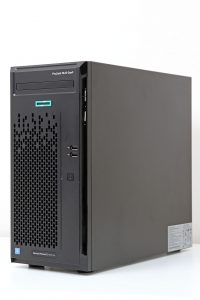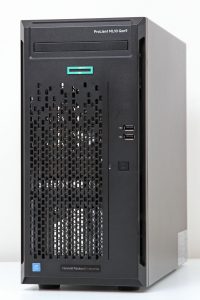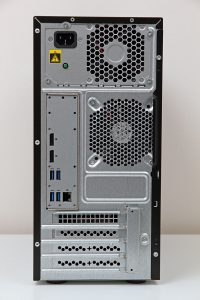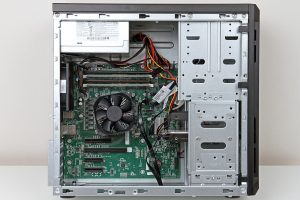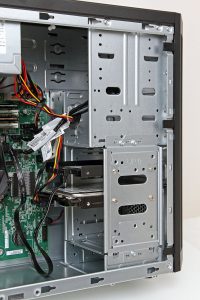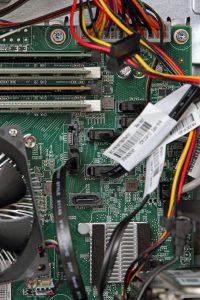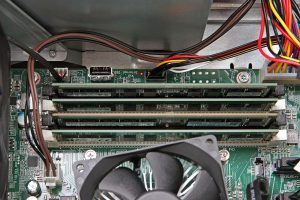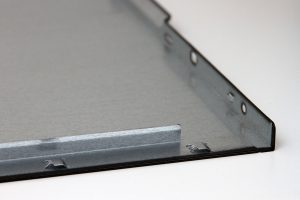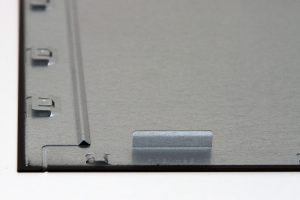I recently started woodturning and chose the Axminster Craft AC305WL woodturning lathe. This is a mid-range hobby lathe with variable speed control. However it doesn’t have a display of the lathe rotational speed.
I thought it would be an interesting project to add a rotational speed display.
Here’s a picture showing the display in action
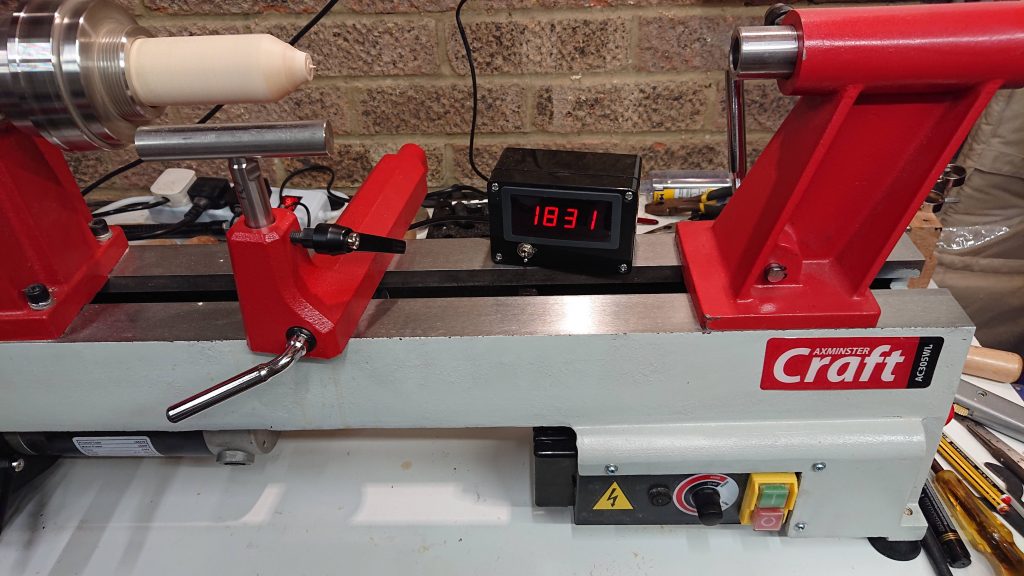
The display is based on a low-cost Digital LED Tachometer RPM Speed Meter with NPN Hall Proximity Switch Sensor. These kits are available on Amazon or Ebay for between £12 and £15 at the time of writing. I housed the display, a 9V PP3 battery and on/off switch in a small black waterproof Plastic Project Box (ABS IP65) 100 x 68 x 50 mm. The Hall Effect sensor was connected by a single 3 wire cable and mounted on a custom made aluminium bracket under the lathe headstock cover.
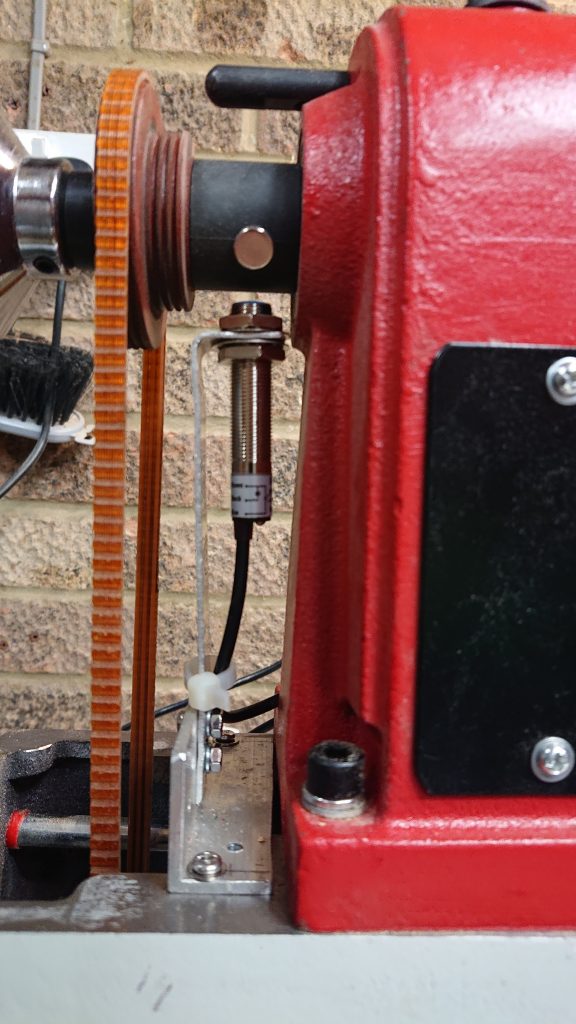
The base of the bracket is bolted onto the lathe bed (which involved drilling two 4mm holes into the cast iron lathe bed). The cable to the sensor exits at the rear under the headstock cover. Note that the bracket, sensor and sensor cable have to clear the drive belt and pulleys!
In the photo you can clearly see the small circular magnet that is stuck to the main drive shaft, it is this magnet passing the sensor that triggers the unit to count the RPM.
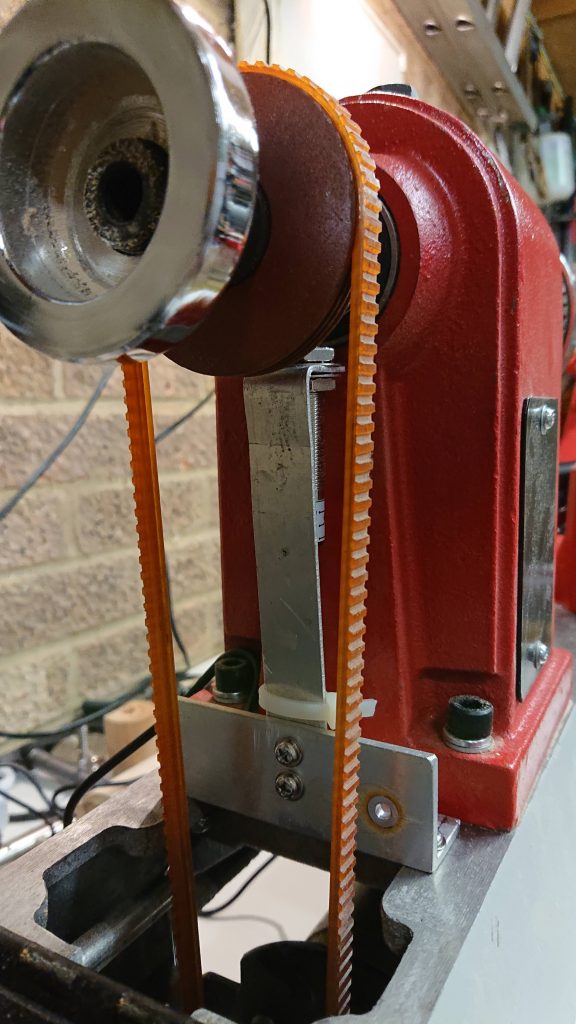
I decided the use a battery to power the RPM Meter as it avoids having another set of cables around the lathe, and I wanted to be able to reposition the display easily, but it could easily be powered by a small mains adapter.
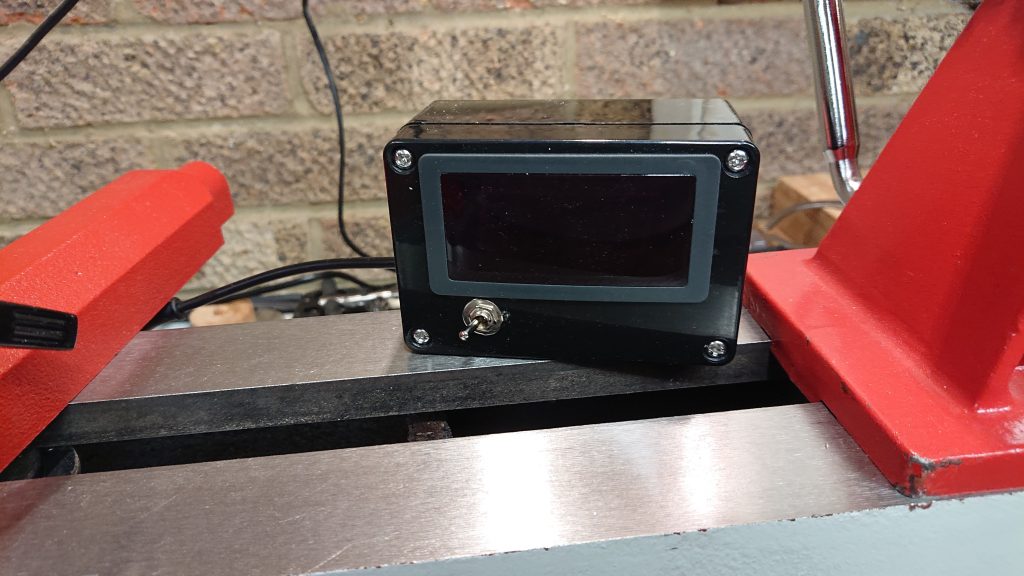
An enhancement I have considered is adding a magnet to the back of the display box, so it can be clipped onto the lathe bad. At the moment I usually have it on the workbench next to the lathe. The battery should last a reasonably long time as I only turn the unit on when I want to check the lathe speed, and the unit doesn’t draw very much power.
